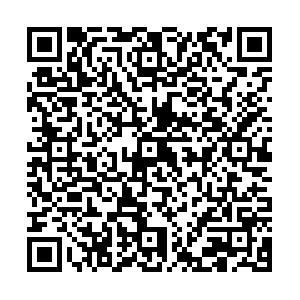Comparison of Exchange Transfusion and Intensive Phototherapy in the Treatment of Neonatal Hyperbilirubinemia
-
摘要:
目的 比较换血治疗合并强光源光疗及单纯强光源光疗并发症的不同及住院时间的差别。 方法 回顾性分析121例足月新生儿高胆红素血症病例,比较换血合并使用强光源光疗组患儿及单纯用强光源光疗组患儿并发症的发生率及住院时间,以及球浆比1:1含枸橼酸盐抗凝剂的红细胞和新鲜冻存血浆换血组与球浆比2:1含枸橼酸盐抗凝剂的红细胞和新鲜冻存血浆换血组患儿贫血发生率。 结果 换血合并使用强光源光疗组患儿并发症的发生率高于单纯强光源光疗组患儿并发症的发生率,差异有统计学意义(P < 0.05),而两组患儿住院时间无统计学意义( P > 0.05);换血组中比较1:1换血组比2:1换血组贫血发生率高,差异有统计学意义( P < 0.05)。 结论 达到换血指标的新生儿高胆红素血症患儿均应考虑先光疗4~6 h并复测血清总胆红素水平,并再次评估是否需要换血治疗,以减少并发症的发生,如采用换血疗法,建议采用2:1换血。 Abstract:Objective To explore the difference in the incidence of complications and hospitalization time between exchange transfusion combined with intensive phototherapy and single intensive phototherapy in the treatment of neonatal hyperbilirubinemia. Methods We retrospectively analyzed the data of 121 hyperbilirubinemia in term infants. We compared the difference in the incidence of complications and the hospitalization time between the exchange transfusion combined with intensive phototherapy and single intensive phototherapy in the treatment of neonatal hyperbilirubinemia. We also studied the incidences of anemia when we use different volume ratios of red blood cells and plasma. Results There were more complications in the group of exchange transfusion combined with intensive phototherapy than the intensive phototherapy group, otherwise there was no difference in the hospitalization time between the two groups. The incidence of anemia of the 1:1 exchange transfusion group was higher than that of the 2:1 exchange group. Conclusions All neonates with hyperbilirubinemia should be considered phototherapy for 4 hours or 6 hours and reassess whether they need exchange transfusion therapy to reduce the incidence of complications. If the exchange transfusion therapy is used, it is suggested that the volume ratios of red blood cells to plasma is 2:1 rather than 1:1. -
表 1 换血组和光疗组疾病构成组间比较[n(%)]
Table 1. Comparison of the disease composition between exchange transfusion group and intensive phototherapy group[n(%)]
组别 Rh溶血 ABO溶血 G6PD酶缺乏 其它 合计 换血组 29(37.2) 27(34.6) 3(3.8) 19(24.4) 78(100) 光疗组 12(27.9) 24(55.8) 1(2.3) 6(14) 43(100) 表 2 换血组和光疗组入院血清总胆红素水平比较( $\bar x \pm s$)
Table 2. Comparison of the serum TBil at admission between exchange transfusion group and intensive phototherapy group( $\bar x \pm s $)
组别 n 入院血清总胆红素(μmol/L) 换血组 78 355.1 ± 37.9 光疗组 43 342.4 ± 37.9 t 1.8 P 0.081 表 3 换血组和光疗组出院前血清总胆红素水平比较( $\bar x \pm s $)
Table 3. Comparison of the serum TBil before discharge between exchange transfusion group and intensive phototherapy group( $\bar x \pm s $)
组别 n 出院前血清总胆红素(μmol/L) 换血组 78 145.7 ± 20.7 光疗组 43 153.4 ± 21.5 t −1.9 P 0.056 表 4 换血组和光疗组血清总胆红素下降水平比较[( $\bar x \pm s $),n(%)]
Table 4. Comparison of the decreasing level of the serum TBil between exchange transfusion group and intensive phototherapy group[( $\bar x \pm s $),n(%)]
组别 n 血清总胆红素下降(μmol/L) 换血组 78 209.4 ± 28.3 光疗组 43 189.0 ± 24.0 t 4 P 0 表 5 换血组和光疗组并发症发生率比较[n(%)]
Table 5. Comparison of the incidence of complications between exchange transfusion group and intensive phototherapy group[n(%)]
组别 发生并发症 未发生并发症 合计 换血组 33(42.3) 45(57.7) 78(100) 光疗组 8(18.6) 35(81.4) 43(100) χ2 6.95 P 0.008 表 6 1:1换血组和2:1换血组并发症发生率比较[n(%)]
Table 6. Comparison of the incidence of complications between exchange transfusion groups with 1:1 and 2:1 of red blood cells to plasma[n(%)]
组别 低氧血症 贫血 血小板减少 电解质紊乱 1:1换血组 5(15.6) 13(40.6) 3(9.4) 4(12.5) 2:1换血组 3(6.5) 2(4.3) 0(0) 3(6.5) χ2 0.85 16 0.13 0.26 P 0.36 0 0.07 0.61 表 7 换血组和光疗组住院天数比较( $\bar x \pm s $)
Table 7. Comparison of the the hospitalization time between exchange transfusion group and intensive phototherapy group( $\bar x \pm s $)
组别 n 住院天数(d) 换血组 78 6.86 ± 1.518 光疗组 43 7.40 ± 1.545 t −1.8 P 0.067 -
[1] 魏克伦, 杨于嘉, 姚裕家, 等. 中国住院新生儿流行病学调查[J]. 中国当代儿科杂志. 2009. 11(01): 15-20. [2] 中华医学会儿科学分会新生儿学组, 中国新生儿胆红素脑病研究协作组 中国新生儿胆红素脑病的多中心流行病学调查研究[J]. 中华儿科杂志. 2012. 50(05): 331-335. doi: 10.3760/cma.j.issn.0578-1310.2012.05.004 [3] 邵肖梅, 叶鸿瑁, 丘小汕. 实用新生儿学[M]. 第5版. 北京: 人民卫生出版社, 2019: 464. [4] 中华医学会儿科学分会新生儿学组. 全国新生儿黄疸与感染学术研讨会纪要(附新生儿黄疸干预推荐方案) [J]. 中华儿科杂志. 2001.39(03): 59-62. [5] 杜立中, 马晓路. 新生儿高胆红素血症诊断和治疗专家共识[J]. 中华儿科杂志. 2014. 52(10): 745-748. doi: 10.3760/cma.j.issn.0578-1310.2014.10.006 [6] DIAMOND LK. Replacement transfusion as a treatment for erythroblastosis fetalis. Pediatrics. 1948. 2(5): 520-4. [7] Steiner LA, Bizzarro MJ, Ehrenkranz RA, Gallagher PG. A decline in the frequency of neonatal exchange transfusions and its effect on exchange-related morbidity and mortality[J]. Pediatrics. 2007. 120(1): 27-32. doi: 10.1542/peds.2006-2910 [8] Jackson JC. Adverse events associated with exchange transfusion in healthy and ill newborns[J]. Pediatrics. 1997. 99(5): E7. doi: 10.1542/peds.99.5.e7 [9] Patra K, Storfer-Isser A, Siner B, et al. Adverse events associated with neonatal exchange transfusion in the 1990s. J Pediatr. 2004. 144(5): 626-631. doi: 10.1016/j.jpeds.2004.01.054 [10] Yu C, Li H, Zhang Q, et al. Report about term infants with severe hyperbilirubinemia undergoing exchange transfusion in Southwestern China during an 11-year period, from 2001 to 2011. PLoS One. 2017. 12(6): e0179550. doi: 10.1371/journal.pone.0179550 [11] Kakkar B, Agrawal S, Chowdhry M, Muthukumaravel PJ, Makroo RN, Thakur UK. Exchange transfusion in neonatal hyperbilirubinemia: A single Centre experience from Northern India[J]. Transfus Apher Sci. 2019. 58(6): 102655. doi: 10.1016/j.transci.2019.09.008 [12] 张倩男, 刘开珍, 李慧繁, 何华云, 华子瑜. 新生儿重症高胆红素血症换血疗法严重不良反应分析[J]. 中华新生儿科杂志. 2019. (02): 93-97. [13] Arnolda G, Thein AA, Trevisanuto D, et al. Evaluation of a simple intervention to reduce exchange transfusion rates among inborn and outborn neonates in Myanmar, comparing pre- and post-intervention rates[J]. BMC Pediatr. 2015. 15: 216. doi: 10.1186/s12887-015-0530-5 [14] 胡劲涛, 谢宗德, 陈平洋等. NICU中新生儿重度高胆红素血症的换血治疗[J]. 中国急救医学. 2008. (06): 492-494. doi: 10.3969/j.issn.1002-1949.2008.06.005 [15] 陈世旺. 不同球浆比组分血换血治疗新生儿高胆红素血症的疗效比较[J]. 临床儿科杂志. 2013. 31(12): 1143-1146. doi: 10.3969/j.issn.1000-3606.2013.12.011 -





 下载:
下载: 
